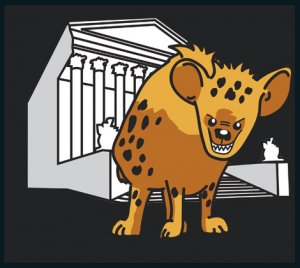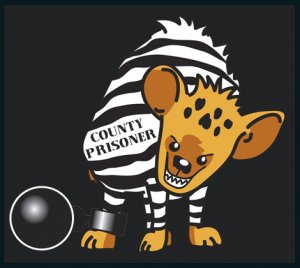There are two primary types of courts in our country: trial courts and appellate courts. Trial courts conduct trials and are the courts that you are most likely familiar with from watching television and movies. Trial courts conduct trials so there will be a judge, witnesses that testify, and the verdict/decision will be made by the judge or jury. The plaintiff(civil) or prosecutor(criminal) bring the lawsuit(file the lawsuit) against the other party (the defendant). Appellate courts hear appeals from trial courts or lower appellate courts. An appeal comes about when a person or party involved in the lawsuit or criminal case believes an error was made by the trial court or lower appellate court. The party or individual then asks an appellate court to review what happened at the lower court to determine if the lower court made a mistake. The primary difference with an appellate court is that in an appellate court there are no witnesses or a jury. It will just be a panel of judges that hear arguments from the two parties, ask questions of the parties, and ultimately make a decision. The party that is trying to appeal is called the appellant and the other side is called the respondent or appellee. The highest court in the Federal Court System is the United States Supreme Court. The U.S. Supreme Court is an appellate court. There are nine justices on the Court. The justices are appointed by the President and serve for life. Because a justice will serve on the Court for many years people that watch the Court wonder how a person nominated to the Court will stand on controversial issues like abortion, death penalty, etc. The Court is very selective in the types of cases it hears and decides. The Court receives over 7,000 petitions a year but only chooses to hear oral arguments in about 100 cases. The United States Court of Appeals is the Federal Appellate Court right below the U.S. Supreme Court. The United States is divided into 12 regional circuits. For example, Tennessee, Kentucky, Ohio, and Michigan are in the 6th Circuit. The United States Court of Appeals for the Sixth Circuit will hear appeals from the United States District Courts in the states of Tennessee, Kentucky, Ohio, and Michigan. The United States District Courts are the trial court in the Federal court system. The U.S. District Courts have jurisdiction in all Federal crimes and in other matters like related to Federal law like copyrights, patents, and civil rights violations. The District Courts have jurisdiction in criminal and civil cases that fit with the jurisdiction given to the U.S. District Court by the U.S. Congress and the U.S. Constitution. Because the structure of each state’s court system is unique to that individual state, I will only give you a sample of what a state court system might look like. I would recommend you ask your social studies teacher about the structure of your state’s court system or go to your state’s website and you will probably find a description of your state’s court system and the types of cases that each court will handle. Supreme Court: The highest court in most states is called the Supreme Court. In much the same way as the U.S. Supreme Court, the state Supreme Courts are appellate courts that are selective in the types of appeals that they will hear. Most Supreme Courts will only take cases that involve important legal issues. Appellate Court: Most states have an appellate court just below their supreme court that handles the majority of the appeals in the state. These appellate courts are usually very busy because of the large number of appeals from the lower trial courts. County or Circuit Court: In most states there is a court that is the primary trial court. That means that that court handles the majority of the civil and criminal cases in the state. For example, a circuit court might have jurisdiction over felony cases and civil cases over $25, 000.00. In addition, many circuit courts will also have a family division that handles divorce and issues related to divorce like child custody and support. Municipal or District Court: In most states there is a smaller trial court that has limited jurisdiction over smaller issues. For example, a local district court might handle misdemeanor criminal offenses, civil cases under $25,000.00, and traffic and other civil infractions. Probate Court: Many states will have a separate probate court that handles issues related to people’s estate when they die. Some probate courts may also contain a special juvenile court. The law comes from a variety of places. At the Federal level the law comes from the U.S. Congress but additional regulations and specific details come from the departments and agencies within the Executive Branch. For example, the Federal Communications Commission writes all of the regulations needed to implement the laws passed by Congress related to broadcast television. The same thing happens at the state level. Your state legislature will enact a law. However in some instances the specifics of the law will be written by another agency within the government. For example, the Michigan legislature enacted a new mandatory high school curriculum, but the specific creation of the curriculum and language of the regulations was the job of the Michigan Department of Education. There will also be laws or ordinances written at your local level. If you live in a city the city council is the traditional law making body. If you live in a township, it will be the township board. In addition, your county commission may make laws. For example, if your town feels that there is a problem with kids cruising, the city council can pass an ordinance that makes cruising illegal. Another interesting example is the situation that students in my school district face with the local curfew laws. The school district includes one city and three townships. There are two different curfews depending where you are at in the school district. In addition, the State of Michigan has a different curfew. Needless to say it is very frustrating for the students because they have to remember the different curfews and make their evening plans according to which township or city they will be in that night. The decisions that appellate courts make become precedents. A precedent is a legal decision that will be used to determine what is appropriate in similar situations in the future. For example, after In re Gault, police and prosecutors needed to make sure juveniles charged with a crime were treated fairly and none of their due process rights were denied.

The Basics
The Federal Court System
A State Court System Sample
Where does the law come from?
Law is created in some other ways.











